Asana Pranayama
Mudra Bandha
With kind regards,  and prem
and prem

Asana Pranayama
Mudra Bandha
Swami Satyananda Saraswati

Yoga Publications Trust, Munger, Bihar, India
YOGA PUBLICATIONS TRUST
Asana Pranayama Mudra Bandha
Asana Pranayama Mudra Bandha is internationally recognized as one of the most systematic manuals of hatha yoga available. First published in 1969, it has been in print ever since. Translated into many languages, it is the main text of yoga teachers and students of BIHAR YOGA SATYANANDA YOGA and numerous other traditions.
This comprehensive text provides clear illustrations and step by step instructions, benefits and contra-indications to a wide range of hatha yoga practices, including the little-known shatkarmas (cleansing techniques). A guide to yogic physiology explains the location, qualities and role of the bodys subtle energy system, composed of the pranas, nadis and chakras. Straightforward descriptions take the practitioner from the simplest to the most advanced practices of hatha yoga. Asana Pranayama Mudra Bandha is an essential text for all yoga aspirants.
Swami Satyananda Saraswati founded the Bihar School of Yoga, India, in 1963. He interpreted the classical practices of yoga and tantra for application in modern society, inspiring an international yoga movement for the upliftment of humanity.
Bihar School of Yoga 1969, 1973, 1996, 2008, 2015
All rights reserved. No part of this publication may be reproduced, transmitted or stored in a retrieval system, in any form or by any means, without permission in writing from Yoga Publications Trust.
The terms Satyananda Yoga and Bihar Yoga are registered trademarks owned by International Yoga Fellowship Movement (IYFM). The use of the same in this book is with permission and should not in any way be taken as affecting the validity of the marks.
The purpose of this book is to provide relevant information regarding yoga practice; it is not to be used for teaching oneself or others. All yoga training and learning should be done under the guidance of an experienced, competent teacher, not from the book alone.
Published by Bihar School of Yoga
First edition 1969
Reprinted 1971
Second edition 1973
Reprinted 1977, 1980, 1983, 1989, 1993, 1995, 1996
Third (revised) edition 1996 (by Bihar Yoga Bharati with permission of Bihar School of Yoga)
Reprinted 1997, 1999
Published by Yoga Publications Trust
Reprinted 2002, 2004 (twice), 2005, 2006
Fourth (revised) edition 2008
Reprinted 2008, 2009, 2012, 2013
First digital edition 2015
ISBN (print): 978-81-86336-14-4
ISBN eMOBI: 978-93-84753-26-9
ISBN ePUB: 978-93-84753-27-6
Publisher and distributor: Yoga Publications Trust, Ganga Darshan, Munger, Bihar, India.
Website: www.biharyoga.net

Dedication
In humility we offer this dedication to
Swami Sivananda Saraswati, who initiated
Swami Satyananda Saraswati into the secrets of yoga.
Contents
T he first edition of Asana Pranayama Mudra Bandha, published in 1969, was derived from the direct teaching of Swami Satyananda Saraswati during the nine month Teachers Training Course conducted at Bihar School of Yoga, Munger, in 1969. The second edition was published in 1973 to commemorate his Golden Jubilee Birthday. At this time, the text was completely revised and new material was added from class notes taken during the 197071 Sannyasa Training Course, which was the last course that he personally conducted.
In response to popular demand and to meet the requirements of a university text, APMB was revised and updated under the direction and inspiration of Swami Niranjanananda Saraswati, the successor of Swami Satyananda Saraswati. This text is currently being used as the main practical text for the teaching of asana, pranayama, mudra, bandha and shatkarma around the world by yoga teachers from every tradition and path.
Since publication of the first edition, interest in yoga has spread widely. Now APMB is used in ashrams, centres and yoga schools in every country as the standard textbook for teachers and students alike. The techniques presented have been assimilated by fields as diverse as medicine, education, entertainment, business, sports and the training of spiritual aspirants.
The science of yoga applies itself to all aspects of life. This revised edition presents basic yogic practices including asanas , postures; pranayamas, breathing techniques; mudras, positions or gestures which represent the psyche; bandhas, locks for channelling energy; and shatkarmas, cleansing practices. All of these techniques purify the body, mind and energy systems to prepare the ground for higher practices of meditation and for the ultimate experience of cosmic consciousness. Also included is a section introducing the chakras, psychic centres, and other aspects of the subtle body.
The effects of yogic practices during and after performance are currently being researched by scientists and doctors around the world. Their results show that asanas, pranayamas, mudras and bandhas are a potent means to restore and maintain physical and mental health.
Asana Pranayama Mudra Bandha is designed for yoga students, spiritual seekers and for those studying yoga in depth. Although many health professionals consult this text as a guide when constructing programs to provide clients with physical, mental and emotional balance, these techniques are not primarily for the sick but for the healthy.
When learning the practices of yoga, the guidance of a competent teacher is recommended. People with specific health problems or who are undergoing a period when extra care is needed, such as pregnancy, need individual guidance, not techniques learned from a book, not even this book. This text provides yogic practices and information for personal evolution. When practised faithfully, under the guidance of a competent teacher, these techniques will expand your consciousness.
Many sannyasins have selflessly contributed to the compiling, editing and publishing of this text. To one and all, yoga aspirants extend their gratitude for bringing this information to them.
Yoga is not an ancient myth buried in oblivion. It is the most valuable inheritance of the present. It is the essential need of today and the culture of tomorrow.
Swami Satyananda Saraswati
Yoga is the science of right living and, as such, is intended to be incorporated in daily life. It works on all aspects of the person: the physical, vital, mental, emotional, psychic and spiritual.
The word yoga means unity or oneness and is derived from the Sanskrit word yuj, which means to join. This unity or joining is described in spiritual terms as the union of the individual consciousness with the universal consciousness. On a more practical level, yoga is a means of balancing and harmonizing the body, mind and emotions. This is done through the practice of asana, pranayama, mudra, bandha, shatkarma and meditation, and must be achieved before union can take place with the higher reality.
The science of yoga begins to work on the outermost aspect of the personality, the physical body, which for most people is a practical and familiar starting point. When imbalance is experienced at this level, the organs, muscles and nerves no longer function in harmony; rather they act in opposition to each other. For instance, the endocrine system might become irregular and the efficiency of the nervous system decrease to such an extent that a disease will manifest. Yoga aims at bringing the different bodily functions into perfect coordination so that they work for the good of the whole body.
Next page

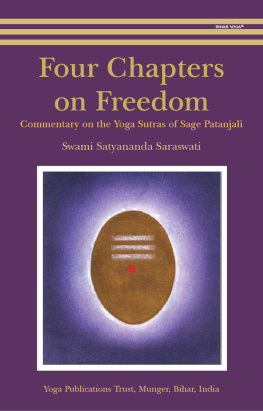
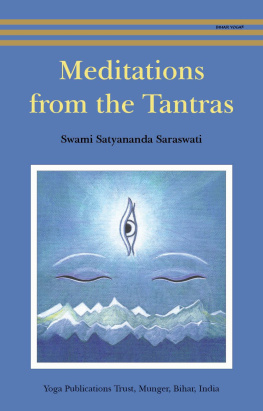
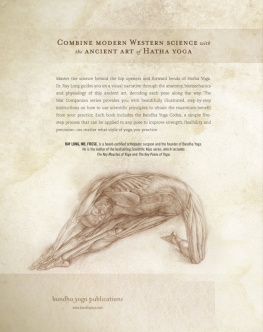
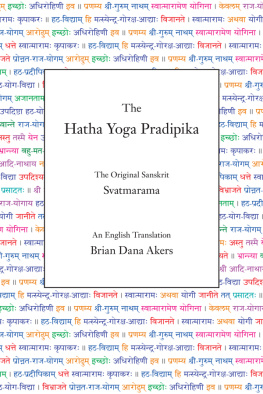

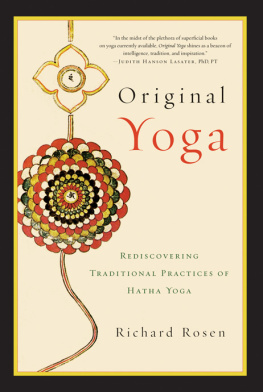
 and prem
and prem

